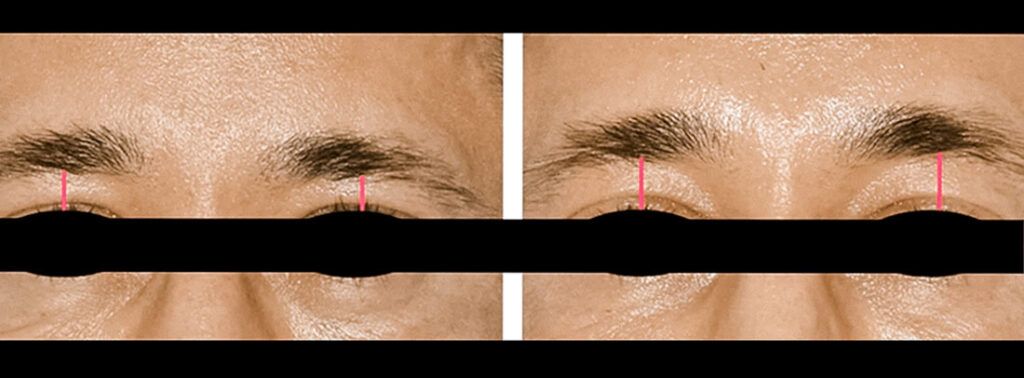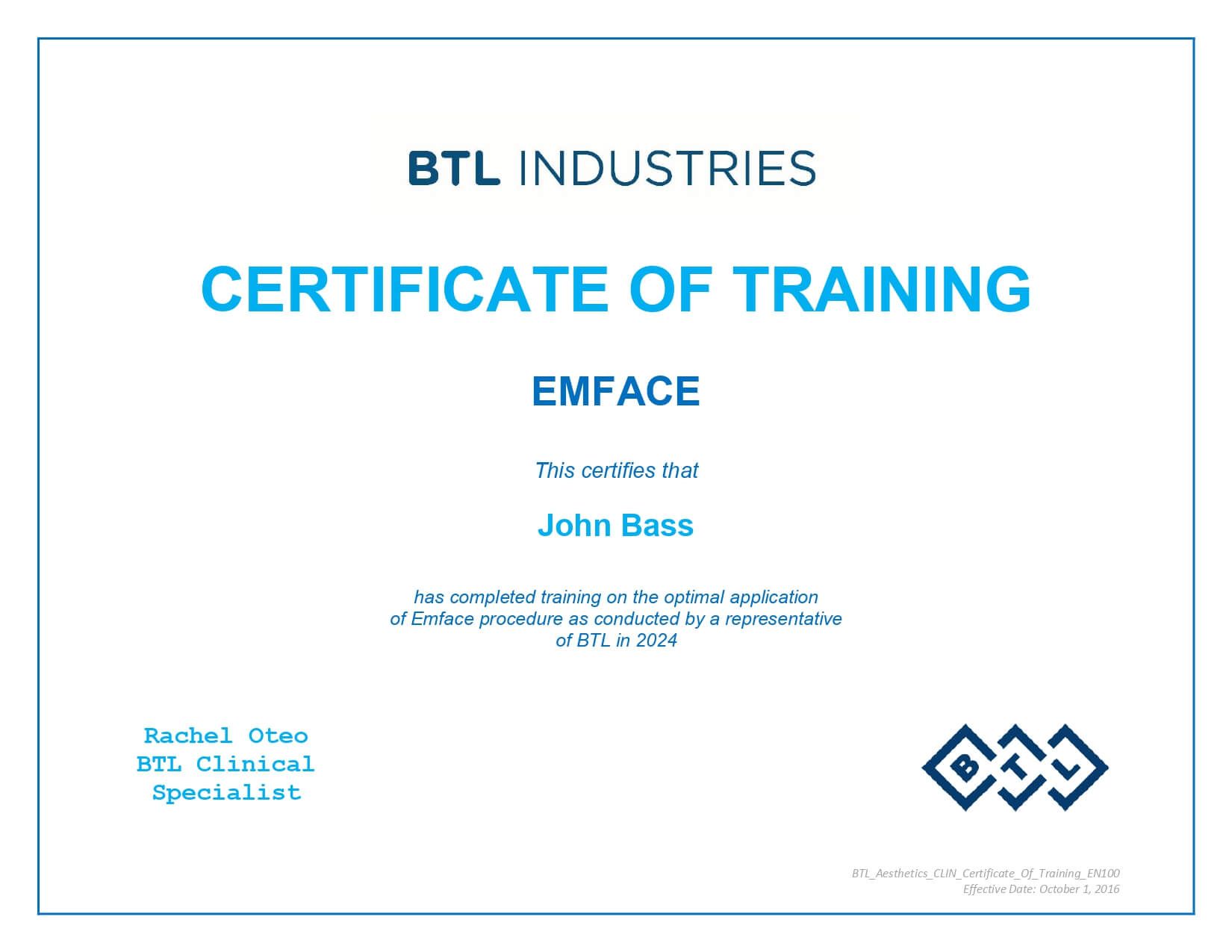EMFACE is the first device in the non-invasive facial aesthetic segment that utilizes the simultaneous application of Synchronized RF and HIFES technology to treat multiple facial layers simultaneously.
Facial aging is a complex process resulting not only from skin aging but also from changes in the volume and density of the underlying structures, including the fascial system, facial ligaments, and facial muscles.1

Although Synchronized RF heating ensures skin texture improvement, treating only textural concerns is not enough. As we age, facial tissue becomes saggy due to changes in the facial musculature and laxity in the connective tissue. Therefore, it is necessary to target the underlying structures to achieve a more youthful appearance.
Clinical studies on EMFACE focusing on structural changes demonstrated a prominent skin remodeling effect. These studies found that collagen increase ranged between 26 – 27% and elastin increase ranged between 110-129% two to three months following the procedure.3,5
Additional study6 investigating changes in skin texture and facial appearance reported a 36.8% wrinkle reduction and 25.3% skin evenness improvement three months post procedure.
To achieve a complete and more targeted approach to treating all facial layers, the EMFACE utilizes HIFES technology, specifically designed to target the small delicate facial muscles. Facial muscles undergo atrophy and loss of muscular tone due to aging, similarly to the skeletal muscle, and also due to the long-term use of neurotoxins.7,8
HIFES technology selectively induces supramaximal contractions in the facial elevator muscles. The intense contractions are strong stimuli that trigger a tissue response leading to promotion of muscle protein synthesis9,10 and to myofiber renewal11.
Such processes lead to structural remodeling of the targeted muscles, which has been seen in EMFACE study12 showing 19.2% increase in muscle density and 21.2% increase in number of myonuclei, which provide the muscle with nutrition.

The expression of HSP or SC is higher when the muscle is exposed to the simultaneous delivery of heating of around 40°C and supramaximal contractions compared to individual or consecutive energy applications.15,16 This simultaneous delivery induces a strong signal, which is followed by a stronger response in the skin, muscle and fascial tissue, leading to more pronounced structural remodeling. 9,10,17–19
Aside from the muscle and skin tissues, the EMFACE also affects the subdermal connective tissue. The facial fascial framework is largely composed of elastin, collagen, and connective tissue, and their degradation is part of the aging process. Synchronized RF heating with EMFACE may support the fascial framework via collagen and elastin remodeling, similar to what has been documented in previous skin tissue studies.
In addition, the fascial support structures have also been found responsive to mechanical stimuli, which in case of EMFACE is delivered with HIFES stimulation.20 The combination of both the heating and mechanical stress on the fascial support structures may lead to fascial remodeling, leading to increased fascial tightness and elasticity.20
Due to the unique design and energy delivery, EMFACE applicators do not induce the stimulation of the depressors since the stimulation of the depressors could potentially lead to a worsening of rhytides. The forehead application targets the frontalis muscle (brow elevator) and corresponding fascias while avoiding the depressors in the glabella.
Restoring the tonus of the frontalis muscle and tightening the fascias in combination with the skin remodeling leads to reduced horizontal forehead lines, brow elevation, and skin texture improvement.
The cheek application primarily targets the more superficial muscles of the cheeks (zygomaticus major/minor & risorius), which are all interconnected elevating units. In contrast, other deeper muscles, such as masseter m. are unaffected. Stimulation of these superficial muscles leads to an elevation of the entire cheek, increasing the midfacial volume and improving the nasolabial fold.
Increasing the pull of these elevators further leads to a repositioning not only of the midface but of the lower facial soft tissues. The resulting clinical effect is a reduction in jowls and an increase in jawline contouring. The combined effect of HIFES with Synchronized RF manifests as an overall textural improvement of the skin.